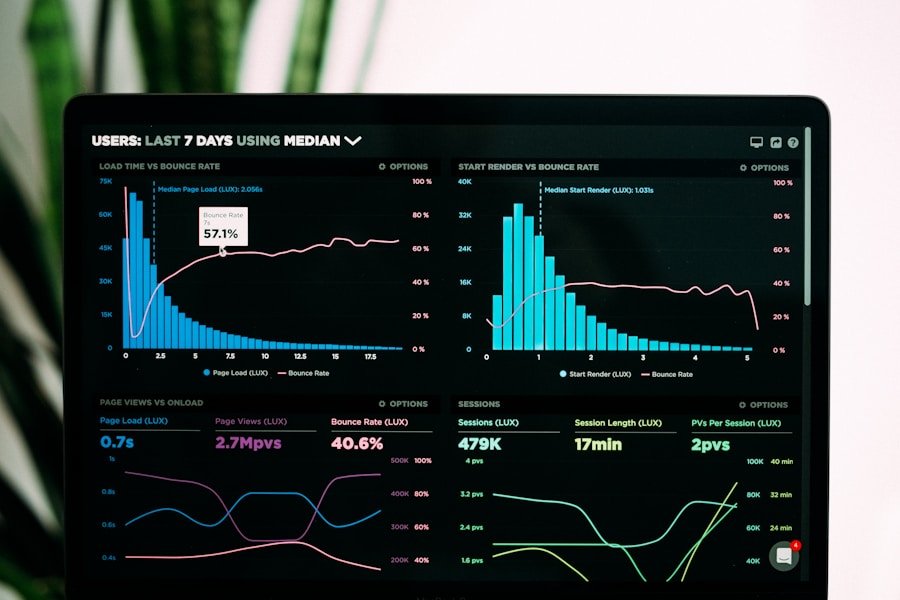Social media has become an essential component of modern life, enabling global connections with friends, family, and colleagues. However, it also presents a significant threat to cybersecurity, as hackers increasingly exploit social media platforms to launch attacks on individuals and organizations. By recognizing the risks associated with social media, users can take proactive measures to protect themselves from these threats.
One primary method hackers use to exploit social media is by creating fake profiles and accounts. These profiles are designed to gather information about targets, including their interests, hobbies, and personal relationships. This information is then used to craft targeted phishing emails or social engineering attacks.
Additionally, hackers may use fake accounts to disseminate malicious content, such as phishing links or malware-infected files. These fake accounts can be challenging to detect, as hackers often invest significant effort in making them appear legitimate. Consequently, users must remain vigilant and exercise caution when interacting with unknown individuals on social media.
Social media is also vulnerable to social engineering tactics, which involve manipulating individuals into divulging sensitive information or performing actions that compromise their security. Hackers often use social media to gather information about their targets, including their preferences, dislikes, and personal relationships. This information is then used to craft convincing social engineering attacks.
For instance, a hacker may create a fake profile posing as a friend or colleague of the target, using this persona to gain trust and extract sensitive information. By understanding the tactics employed by hackers on social media, users can better protect themselves from falling victim to these attacks.
Key Takeaways
- Social media platforms are used by hackers to launch cyber attacks, posing hidden dangers to individuals and organizations.
- Understanding the risks of social media exploitation by hackers is crucial for protecting sensitive information and preventing cyber attacks.
- Hackers use social media to target individuals and organizations through tactics such as social engineering and spreading malicious content.
- Social engineering is a method used by hackers to manipulate users on social media and gain access to sensitive information.
- Phishing and malware are commonly used by hackers on social media to spread malicious content and gain unauthorized access to personal and organizational data.
The Tactics of Cyber Attacks: How Hackers Use Social Media to Target Individuals and Organizations
Fake Profiles and Accounts
One common tactic used by hackers is the creation of fake profiles and accounts. These fake accounts are often used to gather information about their targets, such as their interests, hobbies, and personal relationships. This information can then be used to craft targeted phishing emails or social engineering attacks. Additionally, hackers may use fake accounts to spread malicious content, such as links to phishing websites or malware-infected files. These fake accounts can be difficult to detect, as hackers often go to great lengths to make them appear legitimate.
Social Engineering Attacks
Another tactic used by hackers on social media is the use of social engineering. Social engineering involves manipulating individuals into divulging sensitive information or performing actions that may compromise their security. Hackers often use social media to gather information about their targets, such as their likes, dislikes, and personal relationships, which can then be used to craft convincing social engineering attacks. For example, a hacker may create a fake profile posing as a friend or colleague of the target and use this persona to gain their trust and extract sensitive information.
Phishing Links and Malware-Infected Files
In addition to fake profiles and social engineering, hackers also use social media to spread phishing links and malware-infected files. Phishing links are often disguised as legitimate websites or documents and are designed to trick users into divulging sensitive information, such as login credentials or financial details. Similarly, malware-infected files are often disguised as harmless documents or images and are designed to infect the user’s device with malicious software. By understanding these tactics, users can better protect themselves from falling victim to cyber attacks on social media.
Social Engineering: How Hackers Manipulate Users on Social Media to Gain Access to Sensitive Information
Social engineering is a tactic used by hackers to manipulate individuals into divulging sensitive information or performing actions that may compromise their security. Hackers often use social media to gather information about their targets, such as their likes, dislikes, and personal relationships, which can then be used to craft convincing social engineering attacks. For example, a hacker may create a fake profile posing as a friend or colleague of the target and use this persona to gain their trust and extract sensitive information.
One common form of social engineering on social media is the use of fake profiles to gather information about targets. Hackers often create fake profiles to gather information about their targets, such as their interests, hobbies, and personal relationships. This information can then be used to craft convincing social engineering attacks that are tailored to the individual’s interests and relationships.
By understanding how hackers manipulate users on social media through social engineering, individuals can better protect themselves from falling victim to these attacks. Another form of social engineering used by hackers on social media is the manipulation of trust. Hackers often use social media to gain the trust of their targets by posing as friends or colleagues and using this persona to extract sensitive information.
By understanding how hackers manipulate trust on social media, individuals can better protect themselves from falling victim to these attacks.
The Role of Phishing and Malware: How Hackers Use Social Media to Spread Malicious Content
| Types of Cyber Attacks | Statistics |
|---|---|
| Phishing | Over 1.5 million new phishing sites are created each month |
| Malware Distribution | More than 350,000 new malware samples are produced every day |
| Identity Theft | Over 60 million Americans have been affected by identity theft |
| Account Takeover | Account takeover attacks have increased by 300% in the past year |
Phishing and malware are two common tactics used by hackers on social media to spread malicious content and launch cyber attacks on individuals and organizations. Phishing involves the use of deceptive emails or messages that are designed to trick users into divulging sensitive information, such as login credentials or financial details. Hackers often use social media to spread phishing links disguised as legitimate websites or documents in an attempt to trick users into clicking on them.
Similarly, hackers also use social media to spread malware-infected files disguised as harmless documents or images. These files are designed to infect the user’s device with malicious software that can compromise their security and steal sensitive information. By understanding the role of phishing and malware in cyber attacks on social media, users can better protect themselves from falling victim to these tactics.
In addition to spreading phishing links and malware-infected files, hackers also use social media to distribute malicious content through fake accounts and profiles. These fake accounts are often used to spread links to phishing websites or malware-infected files in an attempt to trick users into clicking on them. By understanding how hackers use social media to spread malicious content, users can better protect themselves from falling victim to these attacks.
Protecting Yourself: Tips for Recognizing and Avoiding Cyber Attacks on Social Media
There are several steps that individuals can take to protect themselves from falling victim to cyber attacks on social media. One of the most important steps is to exercise caution when interacting with unknown individuals on social media. Users should be wary of friend requests or messages from individuals they do not know and should avoid clicking on links or downloading files from unknown sources.
Additionally, individuals should be cautious when sharing personal information on social media and should avoid posting sensitive information, such as their address or phone number, publicly. By being mindful of the information they share on social media, users can reduce the risk of falling victim to cyber attacks. Another important step in protecting oneself from cyber attacks on social media is to be vigilant for signs of phishing or malware.
Users should be cautious when clicking on links or downloading files from unknown sources and should be wary of messages that seem suspicious or out of character for the sender. By being aware of the signs of phishing and malware, users can better protect themselves from falling victim to these tactics.
The Impact on Businesses: How Cyber Attacks on Social Media Can Harm Organizations
Financial Consequences
One of the most significant impacts of cyber attacks on businesses is financial loss. This can occur through the theft of sensitive information or disruption of operations. For instance, a successful phishing attack on an employee’s social media account could result in the theft of sensitive company data or financial details.
Reputation Damage
Cyber attacks on social media can also harm a business’s reputation by damaging customer trust and confidence in their security measures. If a business’s social media account is compromised and used to spread malicious content, it could result in customers losing trust in the business’s ability to protect their data.
Legal Repercussions
Another impact of cyber attacks on businesses is the potential for legal repercussions resulting from data breaches or theft of sensitive information. Businesses that fail to adequately protect their data from cyber attacks may face legal consequences resulting from breaches of privacy laws or regulations.
The Future of Cyber Security: Addressing the Growing Threat of Social Media-Based Cyber Attacks
As the use of social media continues to grow, so too does the threat of cyber attacks targeting these platforms. In order to address this growing threat, it is important for individuals and organizations alike to take steps to protect themselves from falling victim to cyber attacks on social media. One important step in addressing the growing threat of social media-based cyber attacks is education and awareness.
Individuals should be educated about the risks associated with social media and should be made aware of the tactics used by hackers to exploit these platforms. By being aware of these risks, individuals can better protect themselves from falling victim to cyber attacks. Additionally, organizations should take steps to improve their security measures in order to protect themselves from cyber attacks on social media.
This may include implementing stronger authentication measures for accessing company social media accounts or providing employees with training on how to recognize and avoid cyber attacks. In conclusion, it is clear that social media has become a prime target for cyber attacks by hackers looking to exploit vulnerabilities in these platforms. By understanding the risks associated with social media and taking steps to protect themselves from falling victim to cyber attacks, individuals and organizations can better safeguard their sensitive information and reduce the risk of financial losses or damage to their reputation resulting from these attacks.
As the threat of cyber attacks on social media continues to grow, it is important for individuals and organizations alike to remain vigilant and take steps to address this growing threat in order to protect themselves from falling victim to these tactics.
FAQs
What are the hidden dangers of social media in relation to cyber attacks?
Social media platforms can be used by hackers to gather personal information about individuals, such as their interests, habits, and even their location. This information can then be used to launch targeted cyber attacks, such as phishing scams or social engineering attacks.
How do hackers use social media to launch cyber attacks?
Hackers can use social media to gather information about potential targets, such as their email addresses, phone numbers, and even their friends and family. This information can then be used to craft convincing phishing emails or messages, making it easier for hackers to gain access to sensitive information or networks.
What are some common tactics used by hackers on social media?
Some common tactics used by hackers on social media include creating fake profiles to gather information, sending malicious links or attachments through direct messages, and using social engineering techniques to manipulate individuals into revealing sensitive information.
How can individuals protect themselves from cyber attacks on social media?
Individuals can protect themselves from cyber attacks on social media by being cautious about the information they share online, being wary of unsolicited messages or requests, and using strong, unique passwords for their social media accounts. It’s also important to keep software and security measures up to date.
What are some best practices for organizations to protect themselves from social media cyber attacks?
Organizations can protect themselves from social media cyber attacks by implementing strict social media usage policies, providing regular training on cybersecurity best practices, and using advanced security measures such as multi-factor authentication and encryption. It’s also important for organizations to monitor their social media accounts for any suspicious activity.













